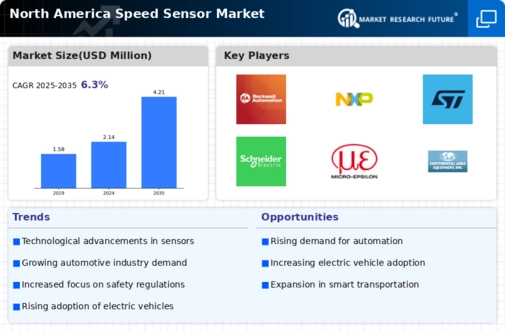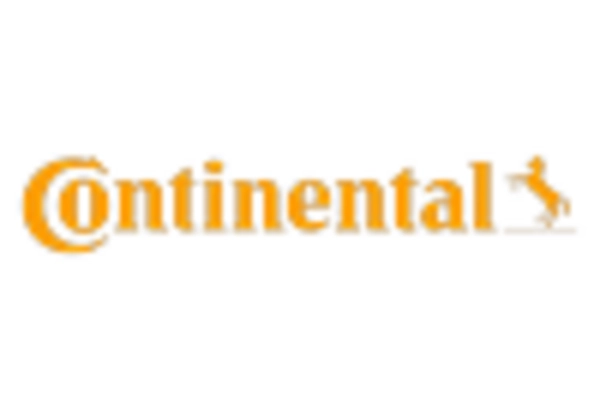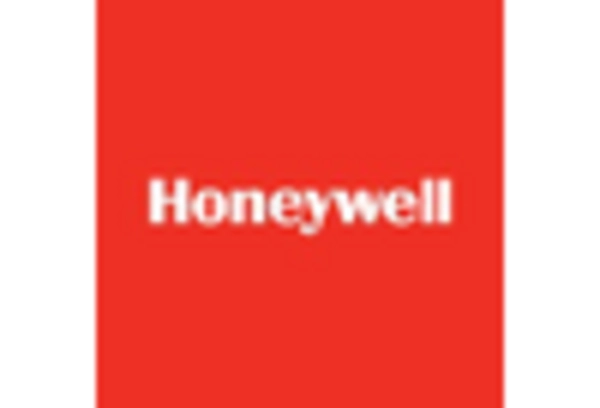Rising Demand for Electric Vehicles
The North America Speed Sensor Market is experiencing a notable surge in demand due to the increasing adoption of electric vehicles (EVs). As manufacturers pivot towards EV production, the need for advanced speed sensors becomes paramount. These sensors play a critical role in monitoring vehicle speed, enhancing performance, and ensuring safety. According to recent data, the EV market in North America is projected to grow at a compound annual growth rate (CAGR) of over 20% through the next few years. This growth is likely to drive the demand for speed sensors, as they are integral to the functioning of electric drivetrains and regenerative braking systems. Consequently, the North America Speed Sensor Market is poised to benefit significantly from this transition towards electrification.
Growth of Autonomous Vehicle Technology
The North America Speed Sensor Market is significantly impacted by the rapid advancements in autonomous vehicle technology. As automakers and tech companies invest heavily in developing self-driving vehicles, the demand for precise and reliable speed sensors is expected to escalate. These sensors are crucial for the accurate perception of vehicle speed, which is vital for the safe operation of autonomous systems. Market analysts suggest that the autonomous vehicle segment could account for a substantial share of the overall automotive market in the coming years. This shift towards automation is likely to create new opportunities for the North America Speed Sensor Market, as the integration of speed sensors becomes essential for the functionality of autonomous driving systems.
Expansion of Smart Transportation Systems
The North America Speed Sensor Market is benefiting from the expansion of smart transportation systems. As cities increasingly adopt intelligent transportation solutions, the demand for speed sensors is likely to rise. These sensors are integral to traffic management systems, providing real-time data on vehicle speeds and traffic flow. This information is crucial for optimizing traffic patterns and enhancing road safety. According to projections, investments in smart city initiatives are expected to reach billions of dollars in the next few years. This trend suggests a growing market for speed sensors, as they are essential components in the infrastructure of smart transportation systems. The North America Speed Sensor Market stands to gain from this trend as municipalities seek to improve urban mobility.
Increased Focus on Vehicle Safety Standards
The North America Speed Sensor Market is influenced by the heightened emphasis on vehicle safety standards. Regulatory bodies are continuously updating safety regulations, necessitating the incorporation of advanced speed sensors in vehicles. These sensors are essential for various safety features, including anti-lock braking systems (ABS) and electronic stability control (ESC). As a result, automotive manufacturers are compelled to integrate high-quality speed sensors to comply with these regulations. The market for speed sensors is expected to expand as manufacturers invest in technology that enhances vehicle safety. This trend indicates a robust growth trajectory for the North America Speed Sensor Market, as safety becomes a non-negotiable aspect of vehicle design.
Technological Innovations in Sensor Manufacturing
The North America Speed Sensor Market is witnessing a wave of technological innovations in sensor manufacturing. Advances in materials science and microelectronics are leading to the development of more efficient and accurate speed sensors. These innovations not only enhance the performance of speed sensors but also reduce production costs, making them more accessible to manufacturers. The introduction of new sensor technologies, such as MEMS (Micro-Electro-Mechanical Systems), is likely to revolutionize the market. As these technologies become more prevalent, the North America Speed Sensor Market is expected to experience growth driven by increased efficiency and reduced costs. This evolution in sensor technology may also lead to new applications and markets for speed sensors.
















Leave a Comment